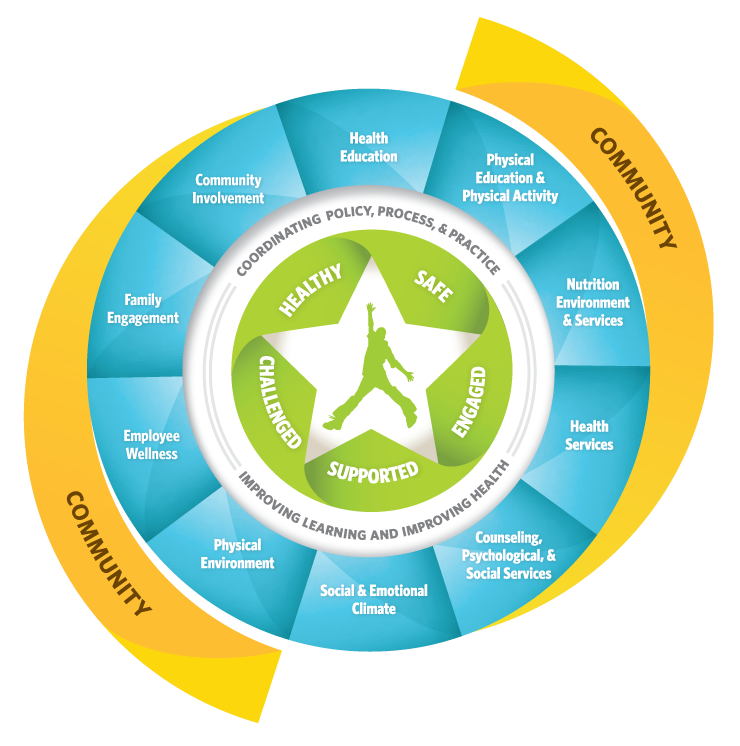The Whole Child Model
History of Health Promotion in U.S. Public Schools
Since the early 1800s, public schools have been providing health services to school-aged children. Over the years, these services have changed to reflect the needs of students, parents and the community they serve. The early focus of these efforts was on health, occupational guidance and character development. Over the years, school health programs came to incorporate prevention and detection of diseases, sanitation, intervention in illness, handicapping conditions, overall health promotion and the building of a positive and safe school environment.
Coordinated School Health
Since 1987, school districts have been required by law to have a Coordinated School Health program. CSH includes a set of planned, sequential, school-affiliated strategies, activities and services designed to promote the optimal physical, emotional, social and educational development of students. CSH connects physical, emotional and social health with education through eight interrelated components.

This coordinated approach improves students' health and their capacity to learn through the support of families, communities, and schools working together. Physical and psychological health are prerequisites for academic achievement.
The Whole Child Model
The Whole Child Model is a more comprehensive version of the CSH program. According to the CDC 2007, “The Whole Child Initiative is an effort to change the conversation about education from a focus on narrowly defined academic achievement to one that promotes the long term development and success of children. The model focuses its attention on the child, emphasizes a school-wide approach, and acknowledges learning, health, and the school as being a part and reflection of the local community. The demands of the 21st century require a new approach to education to fully prepare students for college, career, and citizenship. Research, practice, and common sense confirm that a whole child approach to education will develop and prepare students for the challenges and opportunities of today and tomorrow by addressing students' comprehensive needs through the shared responsibility of students, families, schools, and communities.”
The Whole Child Model expands the CSH in two ways:

The Whole Child Committee
The Whole Child Model programming is overseen by the Whole Child Committee (WCC) at the campus level. Although not required by law, every campus in the Frisco ISD has an active WCC. The WCC develops and implements health/wellness and safe school prevention efforts on its campus. It is made up of students (secondary only), parents, teachers, administrators, counselors, and other school staff. The leader of the committee is the campus Site Coordinator, typically an assistant principal or counselor.
The committee is divided into two subcommittees:
Student Ambassadors
Student Ambassadors are high school leaders who work with the WCC to assess the school climate and identify and evaluate current programs to improve student climate. They propose, develop and implement school-wide programming to address bullying, suicide, drug abuse and other mental health issues. Student Ambassadors strive to activate and mobilize their peers in ways that positively change individuals and the entire learning community.
Vision
Student Ambassadors, along with caring adults, develop proactive strategies to create a learning community where:
-
Bullying, harassment, hazing and violence are not tolerated.
-
Students are accepted regardless of race, ethnicity, religion, age, gender, sexual orientation, disability, cultural background, physical appearance, socioeconomic status or academic achievement.
-
Reporting peer abuse, potential self-harm and other dangerous issues to adults is the norm.
-
Bystanders stand up in the face of injustice.
-
Healthy lifestyles and academic success are encouraged and expected by all.
Responsibilities
-
Use interpersonal and problem solving skills to influence and guide others toward a goal.
-
Inspire others to reach their very best via example and selflessness.
-
Demonstrate integrity and ethical behavior in using influence and power.
-
Act responsibly with the interests of the larger community in mind.
-
Attend meetings and participate in projects.
Staff members select student ambassadors on an annual basis, and each high school decides how to choose students for this program.